Lignocan ADR Lidocaine and Adrenaline Injection
$28.00 – $220.00Price range: $28.00 through $220.00
| Pack Size | Price | Price / Unit | Quantity | |
|---|---|---|---|---|
| 1 Bottle | $28.00 | $28.00/ unit | ||
| 5 Bottles | $125.00 | $25.00/ unit | ||
| 10 Bottles | $220.00 | $22.00/ unit |
Want to order in bulk / B2B price ? | Send Inquiry |


| SKU | 11463 |
| Manufacturer | American Remedies Healthcare Pvt. Ltd |
| Categories | Anesthesia |
| Delivery Time | 10 - 14 Working Days |
Introduction to Lignocan ADR Lidocaine and Adrenaline Injection
Lignocan ADR is a combination injection containing lidocaine, a local anesthetic, and adrenaline, a vasoconstrictor. It is commonly used in medical and dental procedures to numb specific areas of the body and prolong the effects of anesthesia for better patient comfort. It is manufactured by American Remedies Healthcare Pvt. Ltd.
This injection is widely utilized during minor surgeries, suturing, and dental extractions to ensure that the patient experiences minimal pain. The addition of adrenaline helps reduce bleeding in the targeted area, making the procedure more manageable for both the patient and the practitioner.
Lignocan ADR is administered by trained healthcare professionals only, and the dosage is carefully calculated based on the procedure and the patient’s medical history. It is typically injected directly into the tissue where numbness is required, offering targeted and efficient pain control.
Uses of Lignocan ADR Lidocaine and Adrenaline Injection
Lignocan ADR Injection is primarily used as a local anesthetic to numb specific areas of the body during medical and dental procedures. Its main uses include:
- Dental Procedures
- Minor Surgical Procedures
- Emergency Procedures
- Diagnostic Procedures
How Does Lignocan ADR Lidocaine and Adrenaline Injection Works?
Lidocaine in Lignocan ADR Injection works by blocking sodium channels in nerve cells, preventing the transmission of pain signals to the brain. This produces localized numbness, allowing medical or dental procedures to be performed without the patient feeling discomfort or pain in the targeted area.
Adrenaline, also known as epinephrine, works by constricting blood vessels at the injection site. This slows the absorption of lidocaine into the bloodstream, prolonging its anesthetic effect and reducing bleeding during the procedure. The combination ensures effective, localized anesthesia with better control and longer duration.
Side Effects of Lignocan ADR Lidocaine and Adrenaline Injection
Common Side Effects
- Mild pain or burning at the injection site
- Temporary numbness or tingling beyond the treated area
- Dizziness or lightheadedness
- Headache
- Shivering or chills
- Mild swelling or redness near the injection site
Serious Side Effects
- Irregular or rapid heartbeat
- Severe dizziness or fainting
- Chest pain or tightness
- Difficulty breathing or swallowing
- Swelling of the face, lips, or throat (sign of allergic reaction)
- Seizures or convulsions
Dosage of Lidocaine and Adrenaline
The dosage of Lignocan ADR Lidocaine and Adrenaline Injection depends on the type of procedure, the area to be anesthetized, and the patient’s age and health status. It is carefully calculated by a healthcare provider to ensure effective anesthesia while minimizing the risk of toxicity.
How To Manage Side Effects?
- Stay well-hydrated
- Rest adequately
- Apply cold compress
- Monitor heart rate
- Avoid strenuous activity
- Report unusual symptoms
Warnings & Precautions
- Use only under the supervision of a qualified healthcare professional.
- Inform your doctor about any history of heart disease or high blood pressure.
- Avoid use in areas with poor blood supply or extremities like fingers and toes.
- Do not use if you are allergic to lidocaine, adrenaline, or similar anesthetics.
- Inform your doctor if you are pregnant, breastfeeding, or planning surgery.
- Use caution in patients with thyroid disorders or diabetes.
Storage
- Store at a temperature between 15°C to 25°C (59°F to 77°F).
- Keep away from direct sunlight, heat, and moisture.
- Do not freeze the injection solution.
- Store in the original packaging to protect from light.
- Keep out of reach of children and pets.
Frequently Asked Questions
1. What Should I Do If I Feel Unwell After Lidocaine And Adrenaline Injection?
Ans. If you feel unwell after receiving Lidocaine and Adrenaline Injection—such as dizziness, chest discomfort, or confusion—seek immediate medical attention and inform your healthcare provider as soon as possible.
2. Is Lignocan Adr Lidocaine And Adrenaline Injection Available Over-the-counter (OTC)?
Ans. No, Lignocan ADR Injection is not available over-the-counter and requires a prescription from a healthcare professional. It should only be administered by trained medical personnel in a clinical setting.
3. How Long Does The Effect Of Lidocaine And Adrenaline Injection Last?
Ans. The effects of Lidocaine and Adrenaline Injection usually begin within minutes and can last for 1 to 3 hours, with adrenaline prolonging the anesthetic effect and helping control bleeding during the procedure.
| Pack Size | 1 Bottle, 10 Bottles, 5 Bottles |
|---|---|
| Price/Unit | $22/unit, $25/unit, $28/unit |
Be the first to review “Lignocan ADR Lidocaine and Adrenaline Injection” Cancel reply
Related Products
Anesthesia
Anesthesia


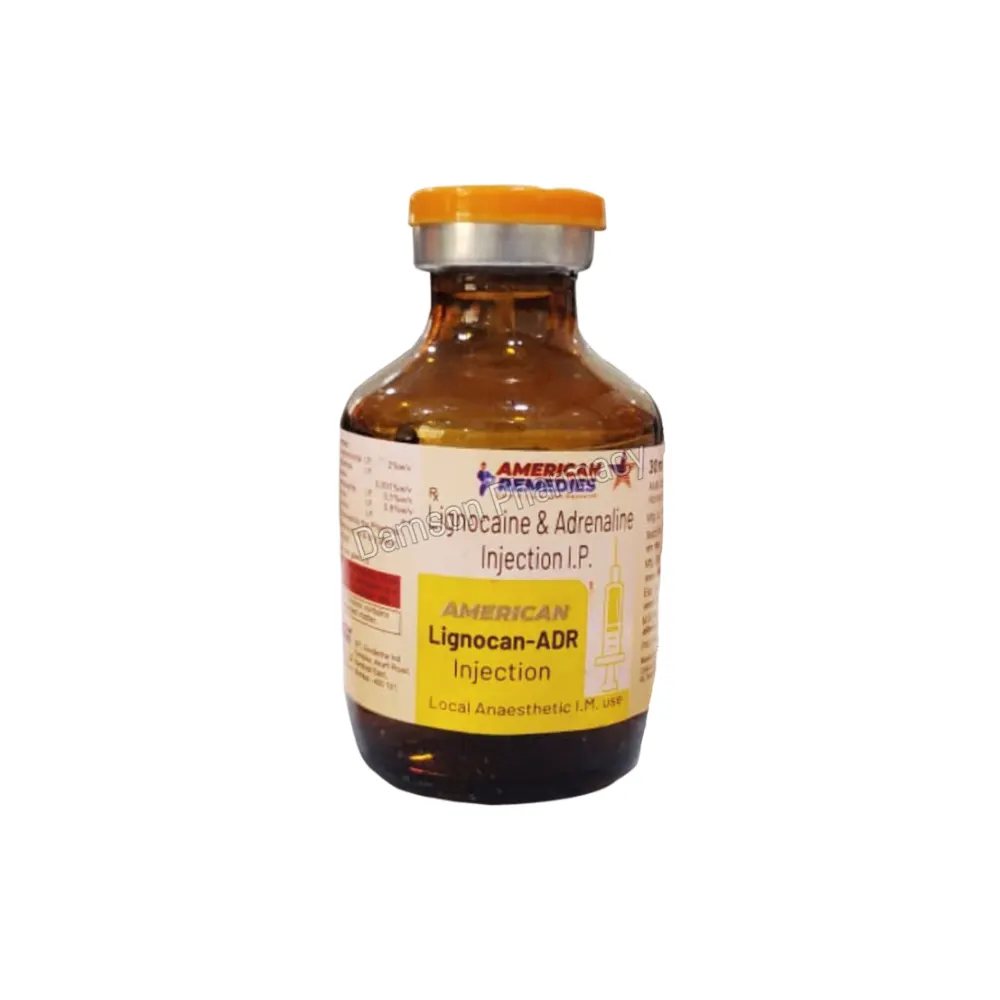
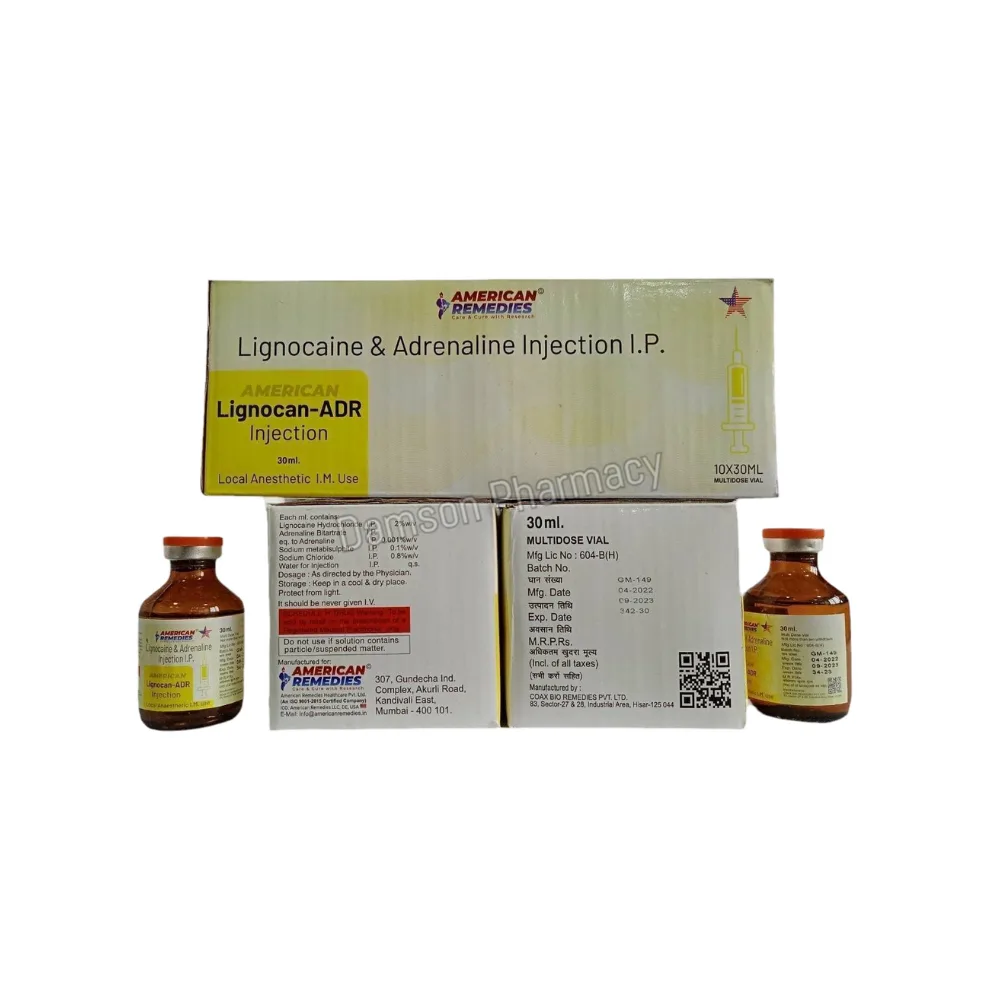

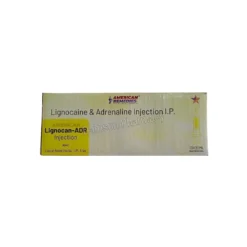
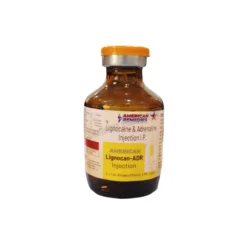
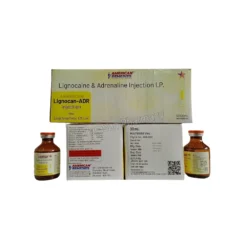

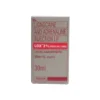
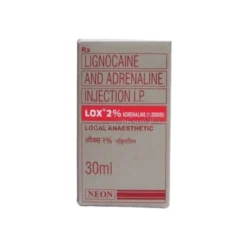

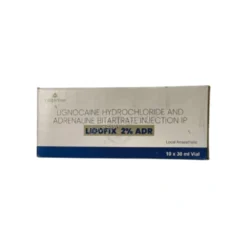
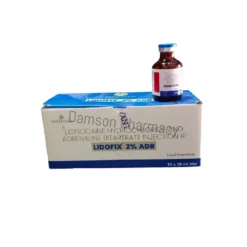
Reviews
There are no reviews yet.